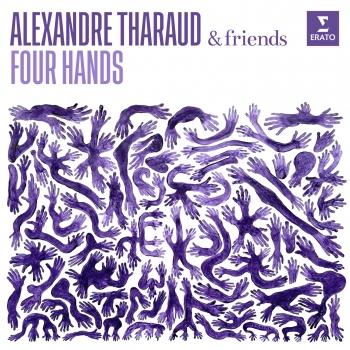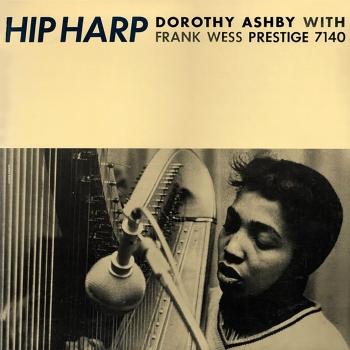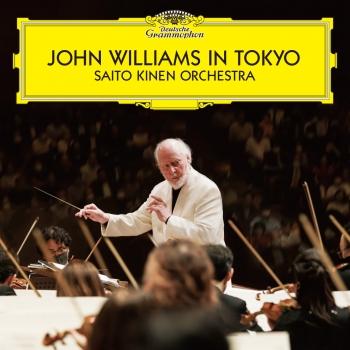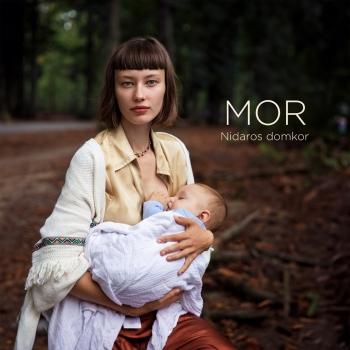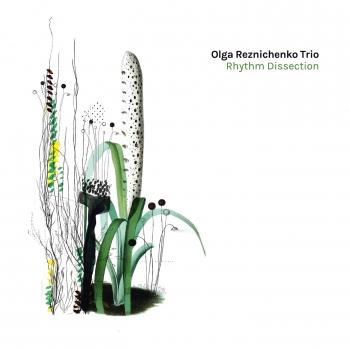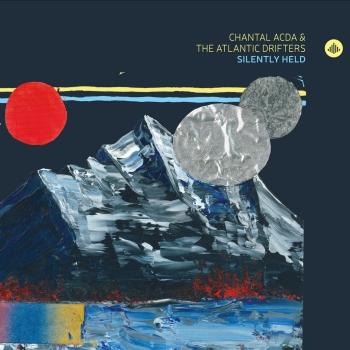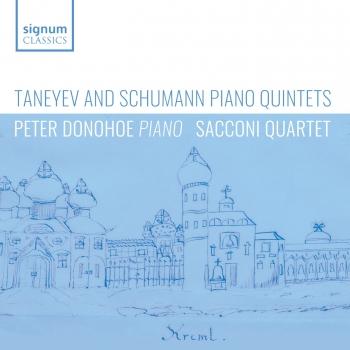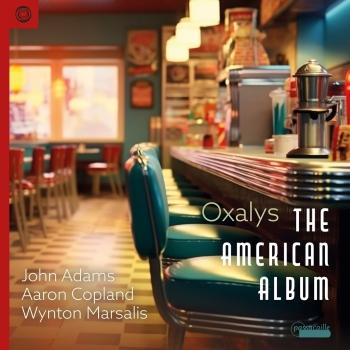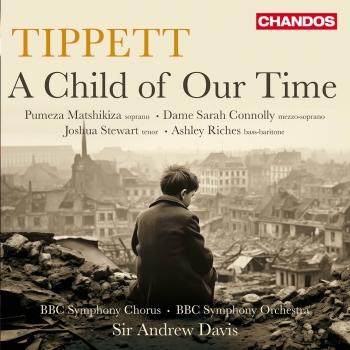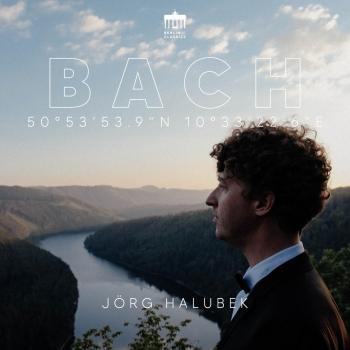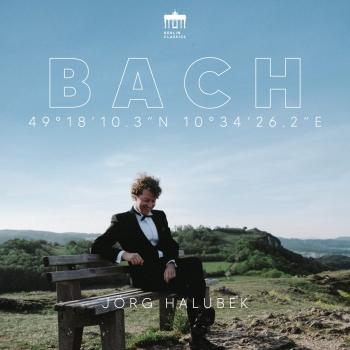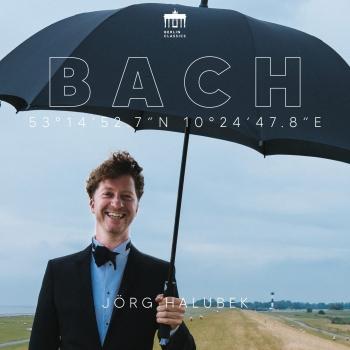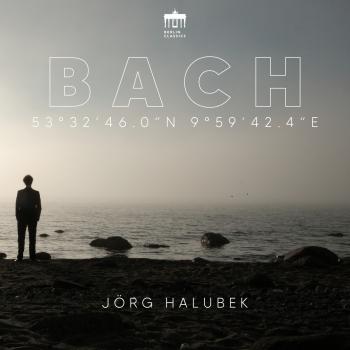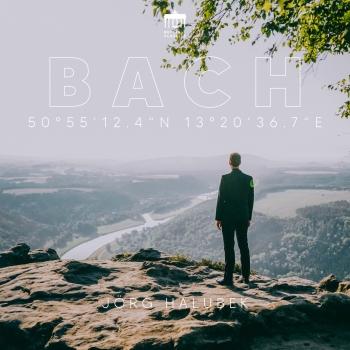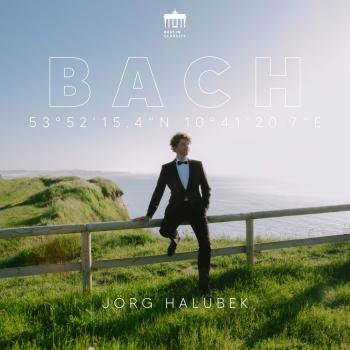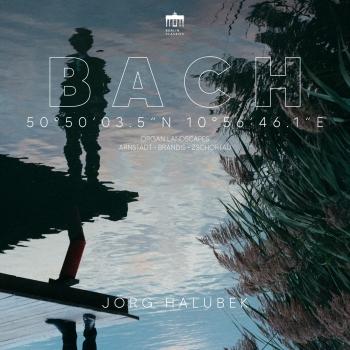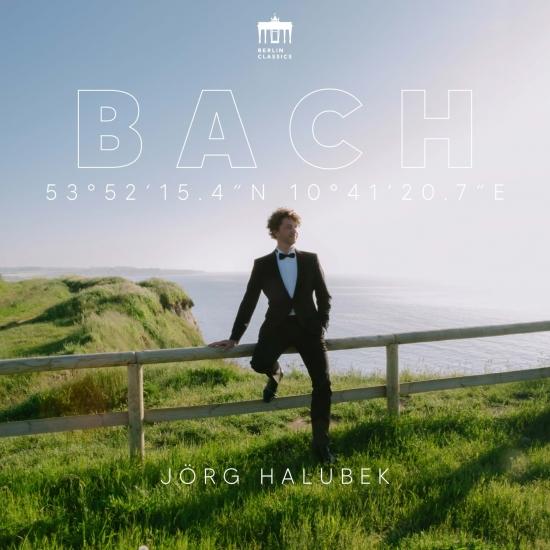
53°52'15.8"N 10°41'19.9"E (Bach Organ Landscapes / Lübeck, Norden & Goslar) Jörg Halubek
Album info
Album-Release:
2022
HRA-Release:
04.11.2022
Label: Berlin Classics
Genre: Classical
Subgenre: Chamber Music
Artist: Jörg Halubek
Composer: Johann Sebastian Bach (1685–1750)
Album including Album cover
- Johann Sebastian Bach (1685 - 1750): Toccata con Fuga in d, BWV 565:
- 1Bach: Toccata con Fuga in d, BWV 565: I. Toccata02:42
- 2Bach: Toccata con Fuga in d, BWV 565: II. Fuga06:05
- Wie schön leuchtet der Morgenstern, BWV 739:
- 3Bach: Wie schön leuchtet der Morgenstern, BWV 73903:49
- Du Friedensfürst, Herr Jesu Christ, BWV 1102:
- 4Bach: Du Friedensfürst, Herr Jesu Christ, BWV 110202:29
- Als Jesus Christus in der Nacht, BWV 1108:
- 5Bach: Als Jesus Christus in der Nacht, BWV 110803:11
- Praeludium in a, BWV 569:
- 6Bach: Praeludium in a, BWV 56905:31
- Fuga in a, BWV 958:
- 7Bach: Fuga in a, BWV 95803:03
- Canzona in d, BWV 588:
- 8Bach: Canzona in d, BWV 58808:00
- Praeludium cum Fuga in g, BWV 535a:
- 9Bach: Praeludium cum Fuga in g, BWV 535a: I. Praeludium - Passagio01:40
- 10Bach: Praeludium cum Fuga in g, BWV 535a: II. Fuga - Allegro04:07
- Allein Gott in der Höh sei Ehr, BWV 715:
- 11Bach: Allein Gott in der Höh sei Ehr, BWV 71502:04
- Allein zu dir, Herr Jesu Christ, BWV 1100:
- 12Bach: Allein zu dir, Herr Jesu Christ, BWV 110002:34
- Der Tag, der ist so freudenreich, BWV 719:
- 13Bach: Der Tag, der ist so freudenreich, BWV 71902:30
- Fuga in G, BWV 577:
- 14Bach: Fuga in G, BWV 57703:33
- Vater unser im Himmelreich, BWV 737:
- 15Bach: Vater unser im Himmelreich, BWV 73703:21
- O Lamm Gottes, unschuldig, BWV 1085:
- 16Bach: O Lamm Gottes, unschuldig, BWV 108503:02
- Choral "O Lamm Gottes", BWV 1085:
- 17Bach: Choral "O Lamm Gottes", BWV 108502:58
- Praeludium in a, BWV 551:
- 18Bach: Praeludium in a, BWV 55106:13
- Fantasia in g, BWV 542:
- 19Bach: Fantasia in g, BWV 54206:21
- Passacaglia, BWV 582:
- 20Bach: Passacaglia, BWV 58208:10
- Thema fugatum, BWV 582:
- 21Bach: Thema fugatum, BWV 58205:33
- Praeludium et Fuga in E, BWV 566:
- 22Bach: Praeludium et Fuga in E, BWV 56610:58
- Praeludium et Fuga in D, BWV 532:
- 23Bach: Praeludium et Fuga in D, BWV 532: I. Praeludium04:52
- Praeludium et Fuga in D, BWV 532:
- 24Bach: Praeludium et Fuga in D, BWV 532: II. Fuga06:09
- Glockenspiel:
- 25Bach: Glockenspiel00:30
- Fuga in g, BWV 542:
- 26Bach: Fuga in g, BWV 54206:33
- Toccata in d, BWV 565:
- 27Bach: Toccata in d, BWV 56502:53
Info for 53°52'15.8"N 10°41'19.9"E (Bach Organ Landscapes / Lübeck, Norden & Goslar)
In Bach's life, Lübeck stands especially for his encounter with Buxtehude. The "smaller" organ of the Jakobi Church has been preserved in its original form and was almost certainly known to Bach. In Norden stands what is probably the best-preserved Schnitger organ in Germany, the formative model for North German organ building as a whole. The very large instrument built by Schnitger's pupil Treutmann in Goslar is already so modern that even Bach's expansive works can be played on it.
"That's how organs should sound, sharp, over a grave bass". Conversation with Hendrik Ahrend about North German organs and their sound:
Southern German, Middle German, Northern German. The phenomenon of organ building and organ sound is sorted into such pigeonholes, at least in the 17th and 18th centuries. Strictly speaking: from today, retrospectively. In Bach's time, one did not speak of landscapes, but rather of personalities, also of schools, because organ builders pass on their knowledge and experience to their journeymen and co-workers, who - depending also on changing tastes - pursue their own ideas of organ building and sound.
Johann Sebastian Bach spent most of his life in the area we now call Central Germany. Arnstadt, Mühlhausen, Weimar, Köthen, Leipzig. Beyond Dresden, Kassel and Berlin, he did not know the Roman Empire of the German Nation - with the exception, of course, of Lüneburg, Lübeck and Hamburg, where the young musician experienced moments that were formative for his organ art. Northern Germany, as we say today.
So how dependent is Bach's organ music on North German organs? Does it exist at all, the "North German organ", the "North German organ sound"? "There are typical disposition patterns in northern Germany," says Hendrik Ahrend cautiously. "North and Central German music for organ has produced a special polyphonic style that demands an independent pedal with the possibility of melody leading. This can be seen very clearly in the larger North German instruments, particularly consistently realised in the instruments of Arp Schnitger."
Whether masters like Schnitger tried to fulfil special requirements of the music and its composers or whether musicians like Bach made use of the possibilities of the instruments, Ahrend sees it as a mutual fertilisation. But the renowned organ builder and restorer knows: "The organ has already inspired musicians for complex polyphony! Very early on, there were mixtures or stops such as Bauernflöte 2' or Cornett 2' in the pedal for the possibility of cantus-firmus playing. An ideal condition, then, for someone who wants to play a melody in the pedal!"
Hendrik Ahrend took over his father's business in Leer, East Frisia, in 2005. Since the 1950s, the organ workshop founded by Jürgen Ahrend has enjoyed a reputation as a leading authority in the restoration of historic organs in the North German-Dutch region. The work on the Schnitger organ in the Ludgerikirche Norden, completed in 1985, is considered one of their masterpieces. "My father has had more historic pipes in his hands than any other person in this world," Hendrik Ahrend admires. "He always tried to feel how these pipes might have sounded once." Could - subjunctive, that is. Because this is where a problem area of restoration begins, which Ahrend sees as a discipline of monument conservation. "Here you always have to deal with evaluation. You gain something and you lose something," he says. "Goals of care can come into conflict with purpose. Organs today are meant to be used in worship as they were in the past, but today there are only twenty people sitting in church, many times fewer than in the 18th century."
With this, the organ builder addresses the sound. How authentic, historical can it be anyway? First of all, the term "North German" in relation to organs and organ music does not come from the 18th century, but from the 20th century. Keyword: organ reform, organ movement, names like Albert Schweitzer, Hans Henny Jahnn, Christhard Mahrenholz. "People looked back to the Baroque organ, which was to be rediscovered," Ahrend points out. "That was a big misunderstanding. One wanted to bring forth the Bach organ, which Bach himself never had. People borrowed from older organs without actually quite liking them." A surprising finding - what didn't they like about the wishful thinking?
Organs with the original wind pressure and cut-ups of the pipes, as Jürgen Ahrend documented them, simply sounded too sharp and too loud, and they demanded a lot from the listener. "The problem is that the Baroque organ had a particularly large number of screaming voices," Ahrend continues. "This term became established as a pejorative in the 19th century, but it was popular in the 18th century. That's what organs were supposed to sound like, sharp, over a grave bass. In the 19th century, however, people sounded the attack on the mixtures. The sound was supposed to become more cosy." So the fact that people wanted mild, silvery-sounding mixtures in the Baroque is a fairy tale. "This leads to the fact that in most restored organs the wind pressures are lower than in the Baroque period" - but what then are today's organ builders supposed to restore, and how does this ambivalence affect their own new buildings?
Back to Bach, the composer who was at home in Central Germany. Of course, there is no clear boundary between organ ideals, neither geographical nor temporal. Christoph Treutmann (1673-1757) probably studied and worked with Arp Schnitger in Hamburg, lived in Magdeburg and built the instrument in Grauhof in 1737, with a magnificent full-voiced pedal. Christian Förner, who in turn influenced the organ builders of the Trost family from Halberstadt, also worked in this area; Heinrich Gottfried Trost (c. 1680-1759) built the organs in Waltershausen and Altenburg and thus came into the field of vision of Johann Sebastian Bach and his students.
"Bach's preferred organ builder, however, was Johann Friedrich Wender", also a grand-disciple of Förner. Hendrik Ahrend draws these lines to emphasise the dependencies and connections between organ builders, personalities, schools and ideas. Wender (1655-1729), whose organs Bach encountered in Arnstadt and Mühlhausen, among other places, "worked more 'North German' than Silbermann and Trost. He especially built the throats in the reed stops so that they sounded 'North German'. Bach appreciated this sound very much!" Unlike the organs of Gottfried Silbermann, which, Hendrik Ahrend believes, were less in keeping with Bach's polyphonic ideal. Apart from the "great" ones in Dresden and Freiberg. But that's another story: the one about the Central German sound! (Dr. Andreas Bomba)
Jörg Halubek, organ
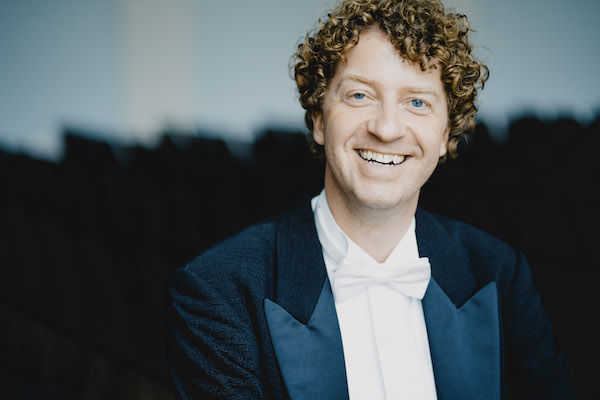
Jörg Halubek
studied church music, organ and harpsichord in Stuttgart and Freiburg with Jon Laukvik and Robert Hill. At the Schola Cantorum Basiliensis, he specialized in period performance practice with Jesper Christensen and Andrea Marcon. He won first prize in the 2014 International Johann Sebastian Bach Competition in Leipzig in the Organ category.
In recent years, Jörg Halubek appeared in the first place as “Maestro al Cembalo”. As guest artist, Jörg Halubek directed from the harpsichord at such venues as the Komische Oper Berlin, Nationaltheater Mannheim, the Handel Festival in Halle, Innsbruck’s Festival Weeks of Early Music, the Wuppertal Opera and the Stuttgart Liederhalle. As guest conductor since 2012 at Kassel’s Staatstheater he is regularly in charge of opera productions, directing such works as Mozart’s “Lucio Silla”, Gluck’s “Iphigénie” and Handel’s “Saul”. His particular concern is for the dramatic relevance of the historical material and he is a strong advocate of making full use of early music’s freedoms in one’s interpretation.
Directing Il Gusto Barocco, the Baroque ensemble he founded, he was invited to bring it to the 2019 Bach Week in Ansbach as festival orchestra and was very well received. 2021 promises the continuation with “L’Orfeo” of the Mannheim Monteverdi cycle he began with Il Gusto Barocco in 2017. Jörg Halubek has extended his discoveries of forgotten operas and opera arrangements, documented in the recent CD release of his premiere recording of Johann David Heinichen’s “Flavio Crispo”, with his 2020 concertante staging of “Cleofida” – Handel’s opera “Poro, Re dell’Indie” in the arrangement by Georg Philipp Telemann with German-language recitatives – in Stuttgart’s Wilhelma-Theater and at the Early Music Days in Herne.
His expertise in the field of early music is well demonstrated by his prizewinning recordings of works for keyboard instruments and violin by Johann Sebastian Bach (2016) and Carl Philipp Emanuel Bach (2014) with Baroque violinist Leila Schayegh. Jörg Halubek has been Professor for Organ and Historical Keyboard Instruments at the Stuttgart Musikhochschule since 2016.
This album contains no booklet.

